In his years of helping companies with their marketing, Growth Labz's Will Wang has seen many of his clients achieve amazingly rapid business growth.
For this episode of James Schramko, he discusses five clients in particular whose business growth strategies offer valuable lessons for entrepreneurs.
Podcast: Download (Duration: 33:51 — 34.7MB)
Get Notified Of Future Episodes Apple Podcasts | Spotify | Amazon Music | Android | Blubrry | Gaana | TuneIn | Deezer | Anghami | RSS | More
Among the many clients whose marketing Will Wang has handled, a good number have achieved rapid business growth. In this podcast appearance, he generously discusses five cases in particular, the business growth strategies of which are too valuable not to share.
One case study illustrates the power of simply addressing a real problem.
Another highlights the advantage of knowing your business metrics front to back.
And you’ll hear how split testing in marketing can drive business growth.
Table of contents
1. Why accelerate business growth?
2. Solving a problem versus creating one
3. Where knowing your numbers is key
4. The role of rapid split testing
5. Doing the unsexy things well
6. Picking one channel to maximize
7. When it’s time, get out of your own way
Why accelerate business growth?
James kicks things off with the question, what would be a reason we want to grow fast?
It’s a good questions, says Will, and probably the best place to start. For the companies and clients he works for, there are several reasons.
– Sometimes the founder or business owner just wants to achieve more.
– Another driver is the need to move fast or lose first mover’s advantage.
– Sometimes it’s the market that helps escalates things, with a big demand for products or services.
Before deciding you want to crush it, however, Will poses the question, Is it worth it? Am I willing to sacrifice to hit the growth?
It’s understanding, well, what is fast growth? What does that mean to you, and is it even worth doing?
In an environment of fast-growing companies, it’s easy to play the comparison game. James, though, is more for sustainable long-term growth.
But because of similarities and crossovers, James has asked Will to pick five companies he’s worked with, that have grown quickly, and to talk about what he thinks has helped that growth.
Solving a problem versus creating one
Will obliges. The first client he talks about, and the only one he’ll name, is a company in the Fintech space, called Airwallex.
Airwallex at the moment is doing about 100 million in revenue, with about 800 million in funding. Huge growth story.
What Will really likes about them, and what he thinks is key to their growth, is that they tackle real problems.
Airwallex helps people move their money between countries. It’s a big, legit problem – companies spend millions of dollars on foreign exchange fees.
This is in contrast with other companies Will has seen, who create or magnify a problem they can solve, rather than address something that’s an actual reality.
Given what he’s seen in terms of fast growth companies, tackling a real problem that’s top of mind for customers, whether it’s B2B or B2C, is always a key place to start from.
Where knowing your numbers is key
Will’s next client comes out of the coaching space. They’ve grown very quickly over the past few years, as a result of several things.
They were great at marketing, terrific on camera, and had a good business model they’d timed perfectly. But what really impressed Will, and what he’d like to highlight, is they just knew their numbers back to front.
He sat with them on a board meeting, and the husband-and-wife team projected growth based on cost per acquisition and cost per lead, what their revenue would look like and how much profit they’d have off the revenue. And because they knew their numbers and their team tracked the numbers, they hit their projection pretty much spot on.
There are two sides to the numbers, says Will:
Business perspective
Here, obviously, you need to know what your cash flow and profitability are looking like, and what expenses you might have coming down the pipeline. He recommends speaking with your accountant about those things.
Marketing perspective
On this side, you look at, how much have you spent on marketing? Has it been consistent spend?
Consistency in marketing includes how much you’re spending every single month; what your key targets are, whether it’s leads, whether it’s people to an email list; knowing what your cost per acquisition and cost per lead is. And then also knowing your customer lifetime value and customer lifetime profit.
Will tends to focus his clients on this side. If you know how much you can make per customer, and you know how much you’re paying to acquire a customer, that gives you a good sense of, what numbers you need from a marketing and acquisition perspective – if you’re underneath that number, you’ll always be profitable.
The role of rapid split testing
The third case study is of an eight-figure business, that sells cool information products online. Will leaves it at that, lest everyone guess who they are.
What led this client to grow very, very quickly was a capacity, a tolerance, and an ability, says Will, to rapidly split test. This came with a comfort level, an acceptance that not every single campaign or ad would do well.
Find the winners, then scale
They built this knowledge into the business itself. When Will’s agency, Growth Labz, launched campaigns, ads, cold emails for them, this client knew that only two or three out of every 10 campaigns would get a great result.
That was ok, because through the 10, they’d find the two or three winners, and they’d then double or triple down on them. This would make them more money than they’d ever lose on the eight duds.
One big challenge Will does see a lot of business owners have is they just want to keep testing. And you should keep testing in a sense, but for Will the ultimate point of testing is to find the winners, to find the gold.
When you have that gold, it’s okay to stop testing and just triple down on everything that you’ve done so far, because now you’ve got the winners, it’s time to scale.
Why you need volume
The other thing James thinks they should mention is that many companies don’t have enough volume to do any meaningful data-related testing.
Exactly, says Will, and it makes a big difference. People tell him they’ve sent 20 cold emails over three months with no reward, which is effectively like doing one pushup and expecting a six pack.
Whether it’s ads or cold emails, Will and his team don’t test for anything under 1,000 sent. Less than that, there’s just not enough data.
Doing the unsexy things well
James once warned Will about wanting to move things too quickly, and the allure of bright, shiny ventures. Hearing that, Will realized this next client was a model of that concept – taking the time to do the unsexy things and do them well.
Will’s client is in debt collection and has been doing the same thing over and over for the past 20 years, doing it very, very well. They’re a big corporation of five different companies under one group, and just do an amazing job.
In meetings with the client, Will says, they talk about refining what they’ve done for two decades into an even better solution that will get even better results.
The client is not in a rush, they know they have good product and a good service. But they still want to improve, while sticking to their lane as debt collectors – they’re not suddenly going to venture, for instance, into financing.
James loves it. His own business model is pretty unsexy – podcast, serve members in the membership – and he’s done it for 10 years straight.
There’s definitely something to be said about having a long-term trajectory, says Will. He’s been guilty of the million dollars tomorrow mindset – how about doing what he does well, and building an asset that lasts for decades?
Picking one channel to maximize
The last case study involves a massive software company that services the retail space. And it’s really about picking one marketing channel and maximizing till you’ve actually saturated it with your presence.
It’s choosing a channel that most people don’t even think about, says Will, but can really drive a business.
You wouldn’t think a software company would do cold email or direct mail. The founder, however, decided to bypass the noise in the advertising space and work with a medium that went straight through to their ideal end user.
They went hard at the market with cold emails, and grew very quickly. At present they must be doing about 100 million a year.
It was cold email to get people to events, cold emailing after events, using email to set ups exciting things around the events, and just getting in front of clients in a way their competitors weren’t. They saturated their channel and didn’t deviate from something they knew was working.
When it’s time, get out of your own way
Before wrapping things up, James wants to share one final tip, something Will wrote down but apparently forgot. James thinks it’s important: Get out of your own way when the time comes.
He’s helped a lot of clients with this as they’ve grown. Some have gone from one million to $10 million a year, and in the process have needed to add senior management roles to their business.
Roles like general manager, chief of staff, chief financial officer, integrator, chief operations person – they need to come into the business so the founder can get out of the way. Because sometimes, it’s the founder who can hold things back.
Such a good point, says Will. A good thing James brought it up.
In the last company Will spoke of, the founder decided to hire a CEO full-time when they were doing 15 or $20 million a year, and extracted himself completely from the business.
He knew where his limitations and passions were, he told Will – he much preferred starting a business and growing it fast than growing a company from 20 to $100 million a year. With a CEO, they’ve since reached $150 million or thereabouts.
The episode has been a lot of fun, says James.
He does know a Grill Will episode is due, where he asks Will questions from viewers. If you have a question for Will, send James an email, [email protected], with Grill Will as the subject line and the question you’d like asked.
Join the community of thriving business owners inside the James Schramko membership
Enjoyed the show? Leave us a review on iTunes
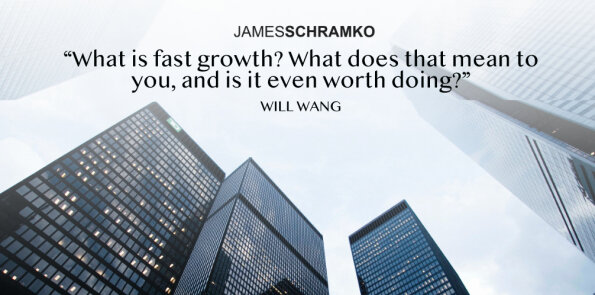
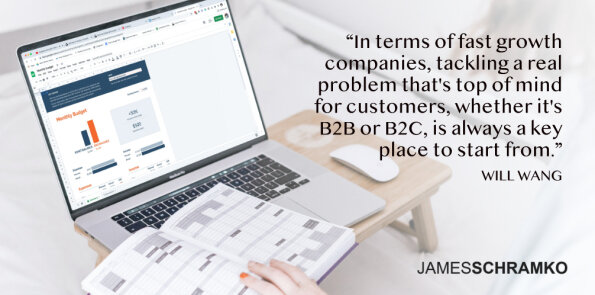
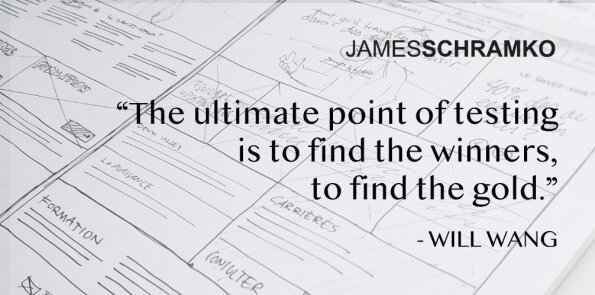
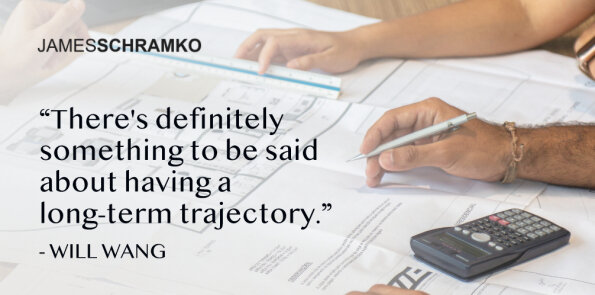

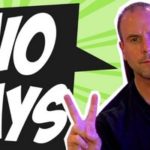







Leave a Reply